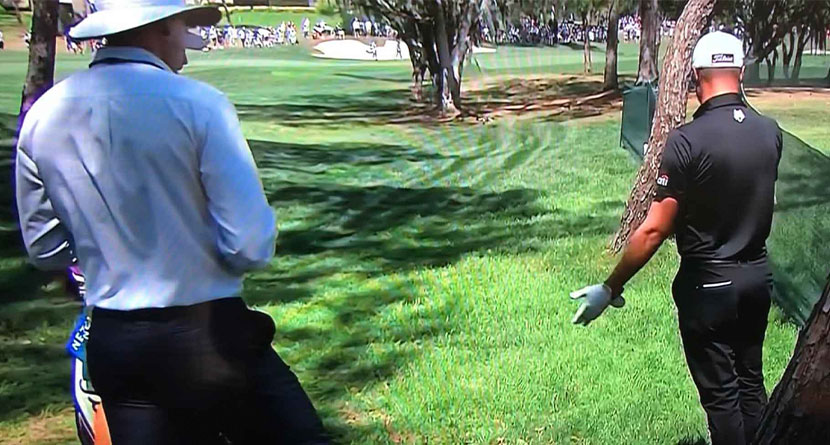Justin Thomas wasn’t getting help from the Rules of Golf during the Valspar Championship’s third round, so he attempted to use the English language as his ally.
Playing the first hole of the Copperhead Course at Innisbrook, Thomas’ ball came to rest near a temporary mesh fence that the tournament committee deemed to be a boundary fence.
Thomas’ conversation with a rules official lasted about 90 seconds and was picked up by Golf Channel cameras.
Confirming the fence isn’t typically there, Thomas pointed out that the fence is, in fact, temporary, just not a “temporary immovable obstruction.”
Justin Thomas wasn’t being helped by the rules book, so he turned to the dictionary.https://t.co/cxqUsVTZfo
— GOLF.com (@GOLF_com) March 19, 2022
“OK, so this isn’t something that — this is usually not here? Or it is here usually?” Thomas asked.
“It usually isn’t here, but we deemed it as a boundary fence,” rules official Andrew Miller said.
“OK, so it is temporary, but it’s not a TIO,” Thomas said.
“Correct,” Miller said.
“That doesn’t seem to make much sense, does it?” Thomas asked rhetorically “No? All right. Thanks,”
Officials related the fence to other boundary fences used on Tour, like Bay Hill, for example. But Thomas had made his point as O.B. stakes wouldn’t affect his swing nearly as much, which is basically all that differentiated the fence from white stakes.
The USGA explains (lack of) relief from boundary objects as follows: “You do not get free relief from objects that define or mark the course boundary. You may not move objects marking course boundaries or take free relief from them like you would from other artificial objects, like a cart path, a building, or a stake marking a penalty area.
“Your options are to play your ball as it lies, proceed under penalty of stroke and distance by playing again from the spot of your last stroke (see Rule 18.1), or decide your ball is unplayable (see Rule 19.1).”
Instead, he punched out at an angle and got up-and-down for birdie. No harm, no foul, but an interesting ruling nonetheless.




